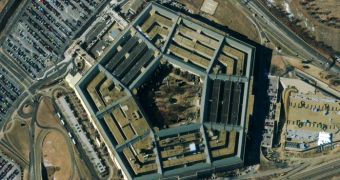Usually, destroying nuclear weaponry facilities or biochemical weapon laboratories poses even more threat to a hefty amount of the surrounding regions because it would spread their content around, provoking exactly what it is trying to avoid – large scale damage. But Pentagon seems to be deeply interested in employing a recently discovered weapon that could take out the inner content of such buildings while leaving the external structure intact.
The weapons involved are called "kinetic fireball incendiaries" or "rocket balls". They have been developed by Kevin Mahaffy, an engineer from the Rocket Propulsion Division of the Air Force Research Laboratory, who was also chief of the Motor Branch for three years, in charge of monitoring solid and hybrid rocket propulsion. Although his invention is held in high secrecy, it has been found out that Pentagon's Defense Threat Reduction Agency (DTRA) offered his company, Exquadrum Inc., contracts for the device.
The rocket balls are made of rubberized rocket fuel given the shape of hollow spheres which feature a small hole that acts like a rocket nozzle upon the ignition of the hollow interior. This causes the “ball” to bounce randomly, like a balloon that has been untied, and access any area within a building. The exhaust resulted in the incendiary process is extremely hot. In fact, it is so hot that it heats up the interior of the building to temperatures over 1,000° Fahrenheit (more than 538° Celsius) in a matter of moments.
Such extreme temperatures allow for a quick destruction of a building's contents without the fear of causing it to become airborne or spreading it around. This is not an entirely new idea, as it was tackled in SF novels such as Philip E. High's “The Time Mercenaries” (1968). But given the fact that it is more efficient and powerful than a bomb (it can also blast through doors while bouncing around), “use with caution” and “handle with care” should be Pentagon's most important rules.

 14 DAY TRIAL //
14 DAY TRIAL //